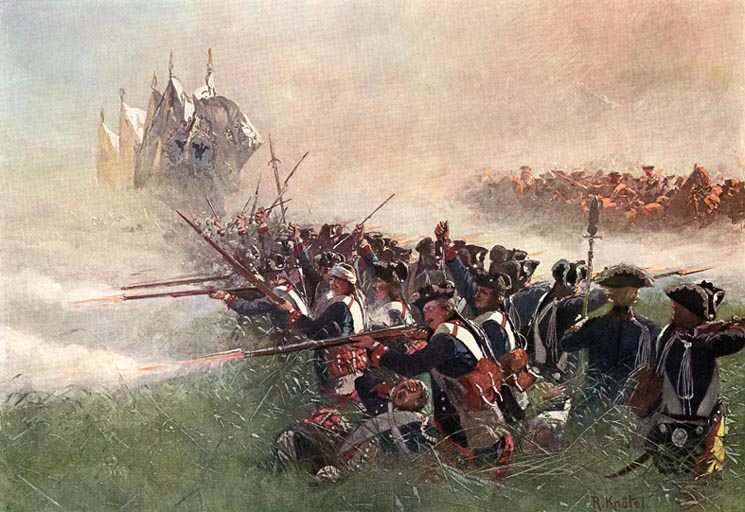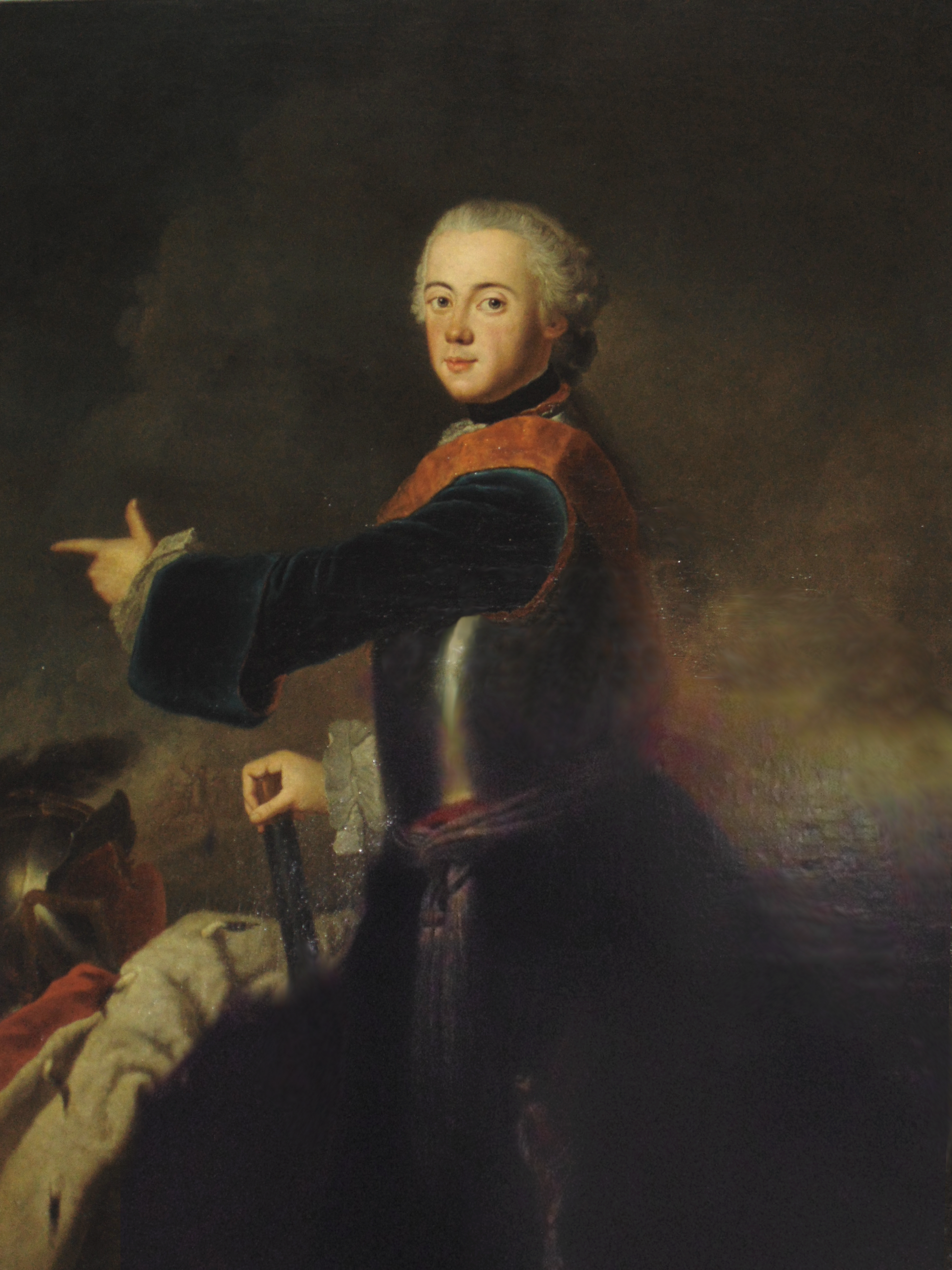 |
| Prussian Leibgarde in action. |
La Grande Guerre depicts battles at a fairly high level of abstraction for a miniatures wargame. Units, consisting of large single stands of many figures, represent brigades of infantry (4-6 battalions) or cavalry (8-12 squadrons) or batteries of a dozen or so guns. Each is rated for strength/training, morale/ferocity (infantry and artillery also get firepower), and movement, with some infantry units getting an extra bonus for including skirmish troops and/or grenadiers.
 |
| Prinz Heinrich, the Prussian commander |
In each turn, players determine which army will have the initiative and what previously dispatched orders have been received and understood. Then the side with the initiative moves, fires, and executes combat; the opposing side follows suit. Because the scale of the game is so great, only artillery gets long-range fire; infantry fire and any cavalry skirmishing is abstracted into the overall combat system. Units can become "nonplussed" (disordered, shaken, or disrupted) from artillery fire, from combat, or from having friendly units retreat through them or break and rout nearby. Only by stopping to reorganize under the direct guidance of a general can a unit recover from being nonplussed.
 |
| Charles, le Prince de Soubise |
The Prussians had a smaller but much more effective army, with an outstanding commanding general, three outstanding divisional generals, and four outstanding brigade commanders. There were three divisions of infantry and two of cavalry, with significant numbers of accompanying artillery. The French had a larger force but a much less impressive one, with no outstanding officers, no grenadiers or tirailleurs, and one division of good infantry among five and one division of good cavalry among three.
The French sought to envelop the Prussians, attacking both on their right with their best cavalry and on their left with a mixed force of horse and foot that sought to march around the flank of the Prussian army, somewhat impeded by woods and streams. The Prussians, in turn, determined to attack directly and with as much vigour as possible, so as to fight a portion of the French army with most of their own, while leaving only a thin screen of light horse to delay the French flanking move.
This choice largely paid off for the blue-coats, as their cuirassiers (and even their dragoons) made short work of most of the French regiment de cheval. Even the French guard cavalry received rough handling from the North Germans, especially the brigade that included the Prussian Garde du Corps, commanded by an able brigadier and urged on by a divisional commander who was Seydlitz or his equal. The French had held their foot guards in reserve, but now these were moved to reinforce the infantry of their right wing who were being pummeled by their opposing Prussian infantry and could clearly soon expect to feel the weight of the Prussian horse as well.
 |
| Rossbach, a battle that the Prince de Soubise would like to forget |
One brigade of French guard cavalry finally realised the black disgrace that was overcoming the whole body and won a series of combats against Prussian horse, putting several heavily worn brigades to flight before being repulsed themselves. The foot guards had driven strongly into the left wing of the Prussian infantry, and the French left wing was finally bringing itself to bear on the Prussian right and rear. We had both done considerable damage to each other's armies, but neither army was ready to break yet when the game ended.
Rocky has already made some revisions to the rules based on our first game, and I'm looking forward to our next go at them.
I do hope to have somephotos up soon, both of this game and of the previous weekend's BCW game.
*Rocky actually specified the generic town of Kampffeld, or "battlefield", but I found to my amusement that there actually is a town of Kempfeld in the Landgraviate of Hesse-Darmstadt in the 1750s, now part of Rhineland-Palatinate.
No comments:
Post a Comment